FEATURED STORYMAP’s International Children’s Art Calendars 2022 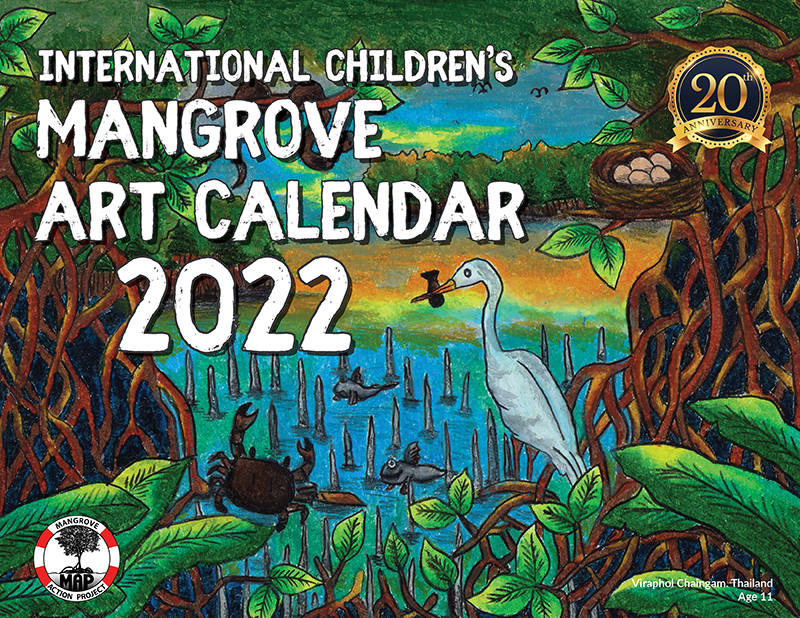
MAP’s International Children’s Art Calendars 2022 are here and ready to order! With beautiful artwork submitted by students from many countries around the world, these calendars both make a great gift, and are a helpful reminder for what we can do to assist in saving our world’s mangroves. All proceeds will go towards furthering MAP’s mission of conserving, restoring, and protecting the world’s invaluable mangrove forests. We wish to thank every child, their teachers and associate non-governmental organizations that participated and collaborated in MAP’s 20th anniversary International Children’s Mangrove Art Contest during 2021. For two decades, MAP’s art contest has been inspiring and creating awareness as well as giving the youths the opportunity to voice and express their point of view on mangrove forests and the problems mangroves face today. We are thrilled to see interest for mangroves continuing to grow among youths, inspiring creative art and learning through participation. Through the art contest, young artists discover the incredible beauty, importance, and biodiversity of mangrove forests, depicting through their art what they have experienced via mangrove field trips, or in the classroom, and home studies. ORDER HERE GLOBAL Identifying global and local drivers of change in mangrove cover and the implications for management

GLOBAL – Climate change and human activities continue to drive a widespread decline in global mangrove coverage, undermining their capacity to provide ecosystem benefits. While global and local scale drivers of change on mangroves are widely acknowledged, the relative importance and the exposure of mangroves to climatic, geomorphological, and direct human threats vary spatially. Understanding the role and relative importance of the multiscale and multiple threats to mangroves and how these vary spatially is fundamental for formulating a spatially adaptive approach to their management and conservation. Using satellite-derived indicators of mangrove condition aggregated over 19 years (2002 to 2019) and 14 proxies of climate, human activity, and geomorphology, we applied machine learning methods to determine the role and relative importance of the change drivers. Using outputs from this deductive statistical process, we applied inductive methods to map mangrove exposure spatially. READ MORE Global restoration now has an online meeting point

GLOBAL – With all of the environmental problems in the world, it can be easy to forget that there are also many solutions. Across the globe, people are working to restore nature, and good ideas abound. Organizing and visualizing this work, however, is a mammoth task, but it is one that the online platform Restor is attempting to achieve. Restor is a map-based, open-source platform that combines on-the-ground knowledge, ecosystem research, and satellite imagery so people can better plan, manage and monitor restoration projects. The locations of more than 50,000 restoration and conservation initiatives are now registered in Restor, as well as data from more than 60,000 scientists on environmental parameters such as climate, temperature, precipitation, local plant and tree species, soil characteristics and more. READ MORE AFRICA Restoring Nigeria’s Lost Ecosystem
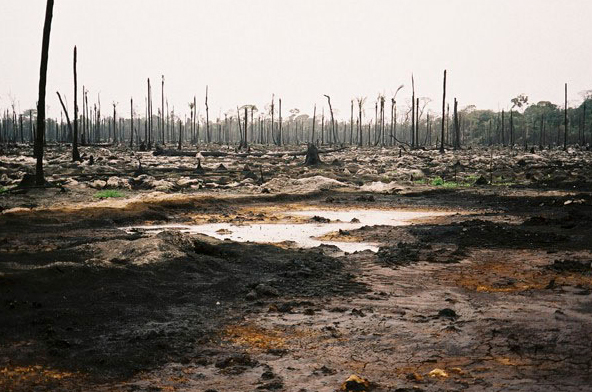
NIGERIA – According to the International Union for Conservation of Nature, (IUCN), the United Nations Decade on Ecosystem Restoration (2021-2030) challenges everyone to massively scale up restoration efforts that breathe new life into our degraded ecosystems. The IUCN contends that ecosystem restoration manifests through actions as varied as new mangroves, grass or other plantings, natural or assisted regeneration, agroforestry, soil enhancement measures, or improved and sustainable management to accommodate a mosaic of land, aquatic, or marine uses. It added that: “Any degraded ecosystem including agricultural areas, savannah, wetlands, protected wildlife reserves, fisheries, managed plantations, riversides, coastal areas, and many others may offer opportunities for improvement through restoration. Ecosystem restoration could focus on re-establishing ecological integrity on a hillside or a seagrass bed to the large-scale landscape restoration of a plateau or mountain range. “There are already millions of hectares of terrestrial and marine ecosystems under restoration across the globe, supported by efforts like the Global Mangrove Alliance and the Bonn Challenge, with contributing regional initiatives such as AFR100 and Initiative 20×20. READ MORE AMERICAS Caribbean Utilities Company and “Marvellous Mangroves” Celebrate 20 Years Together

CAYMAN ISLANDS – The highly successful partnership between Caribbean Utilities Company (CUC) and the Mangrove Action Project’s Marvellous Mangroves Year 5 curriculum is celebrating over 20 years of working together. This programme teaches Cayman’s students about the function and value of its mangrove ecosystems. Executive Director of the Mangrove Education Project, Martin Keeley, estimates that over 15,000 students and more than 200 teachers have experienced the wonders of Cayman’s mangrove forests in the past 20 years. This number also includes many Year 3 classes, which have also experienced the programme. During this time Mr. Keeley explains that the programme has not only relied on the financial support of CUC but also the classroom and logistical support of the National Trust, the Department of Education, Sea Elements and, of course, the many teachers of Cayman’s primary schools. “It was great that CUC joined us earlier this year on a scheduled programme with both Year 5 and Year 3 classes from Sir John A. Cumber Primary School,” Mr. Keeley adds, “It has been part of CUC’s mandate to help support environmental programmes and it is obvious that they are in this for the long run as we continue to learn about the true value of our mangrove ecosystems and efforts to protect and conserve them.” READ MORE Relict inland mangrove ecosystem reveals Last Interglacial sea levels
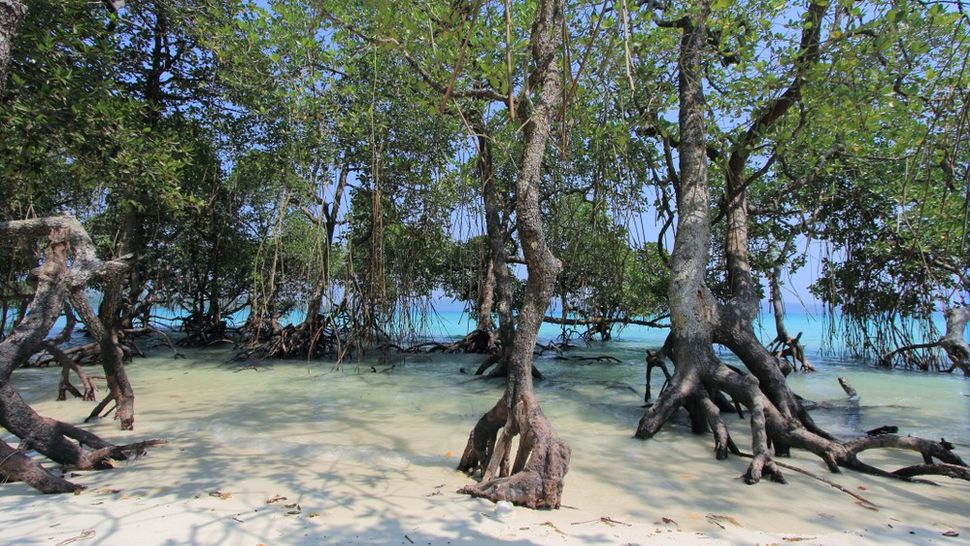
MEXICO – With geological sea-level fluctuations driven by climate change, the distribution of mangrove forests has expanded and contracted through time. We studied an inland, isolated mangrove forest located 170 km away from the nearest coastline in the interior of the rainforests of the Yucatan Peninsula (Mexico). Combining multiple lines of evidence, we demonstrate that this extant forest is a relict from a past, warmer world when relative sea levels were 6 to 9 m higher than at the present. Our finding highlights the extensive landscape impacts of past climate change on the world’s coastline and opens opportunities to better understand future scenarios of relative sea level rise. Climatic oscillations during the Pleistocene played a major role in shaping the spatial distribution and demographic dynamics of Earth’s biota, including our own species. The Last Interglacial (LIG) or Eemian Period (ca. 130 to 115 thousand years B.P.) was particularly influential because this period of peak warmth led to the retreat of all ice sheets with concomitant changes in global sea level. The impact of these strong environmental changes on the spatial distribution of marine and terrestrial ecosystems was severe as revealed by fossil data and paleogeographic modeling. Here, we report the occurrence of an extant, inland mangrove ecosystem and demonstrate that it is a relict of the LIG. READ MORE Inland mangroves reveal a tumultuous climatic past — and hint at our future

MEXICO – Exequiel Ezcurra was dubious when he first heard about the possibility of mangroves on the San Pedro Mártir River in southern Mexico from Carlos Burelo-Ramos, a botanist at Mexico’s University of Tabasco. The red mangrove tree (Rhizophora mangle) does inhabit freshwater environs — Cuba’s Bay of Pigs and the Florida Everglades are two notable examples. But mangroves sitting at least 170 kilometers (106 miles) inland? That seemed unlikely. “You probably got your botanical identification wrong because it doesn’t seem plausible that mangroves are growing in a river with freshwater at such a distance from the coast,” Ezcurra, a professor of ecology at the University of California, Riverside, told Burelo-Ramos. But a confident Burelo-Ramos pushed back, respectfully telling Ezcurra, “I’m a good taxonomist. I know my plants, and this is red mangrove.” READ MORE ASIA Women on storm-hit Philippine island lead Indigenous effort to restore mangroves
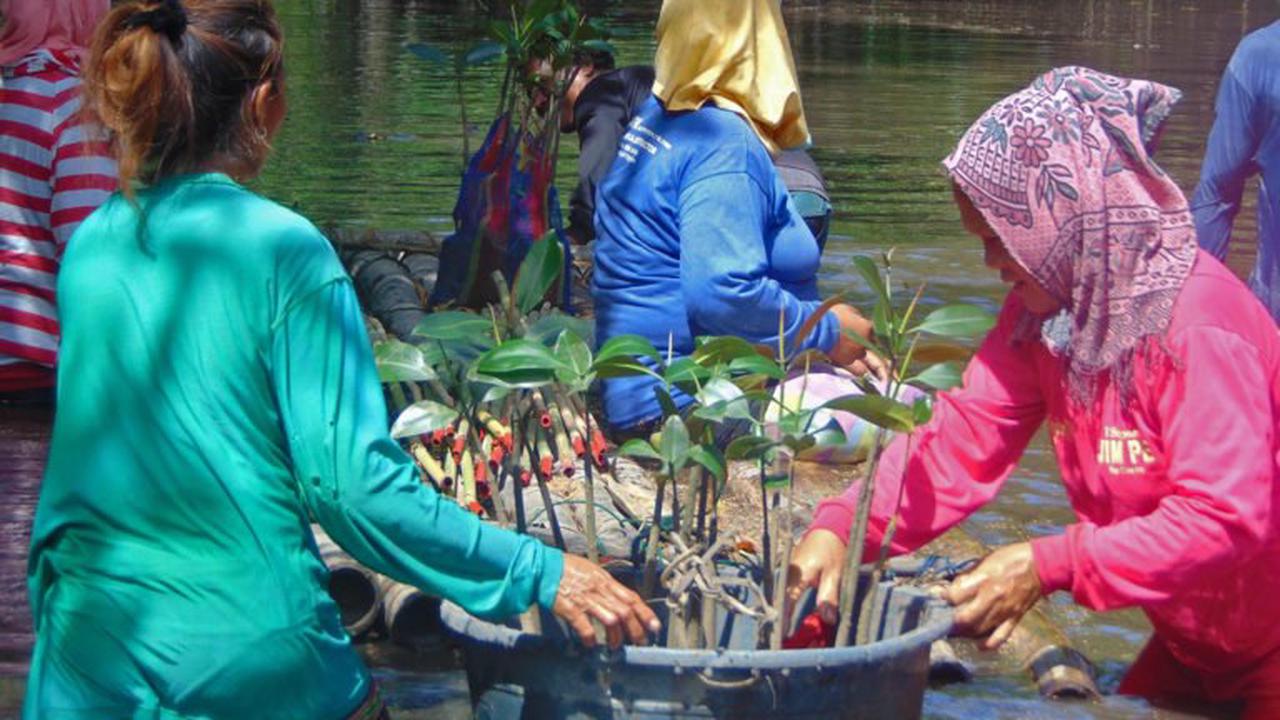
PHILIPPINES – Almost eight years after Typhoon Haiyan barreled into Busuanga Island in the western Philippines, the lesson it left is still etched in the mind of village leader Annabel Dela Cruz. For her and other Indigenous women in the village of Quezon on Busuanga’s northern coast, keeping their mangrove forest intact is now seen as a matter of survival amid the climate crisis. “We were surprised because we were rarely in the path of tropical storms,” said Dela Cruz, recalling the night in November 2013 when Haiyan ravaged this island town. Quezon’s mangrove forest, then classified by the government as logged over, provided Dela Cruz’s community with little protection against strong waves and wind. Many wooden fishing boats and thatch-roofed houses, including Dela Cruz’s, were destroyed. Had they realized earlier how a healthy mangrove forest’s complex root network can shield a community from typhoons, they would have it restored a long time ago, the 56-year-old Indigenous leader said. So, as the villagers gradually got back on their feet, they started shoring up their defenses against future storms by restoring their mangroves. READ MORE Photos show Manila Bay mangroves ‘choking’ in plastic pollution
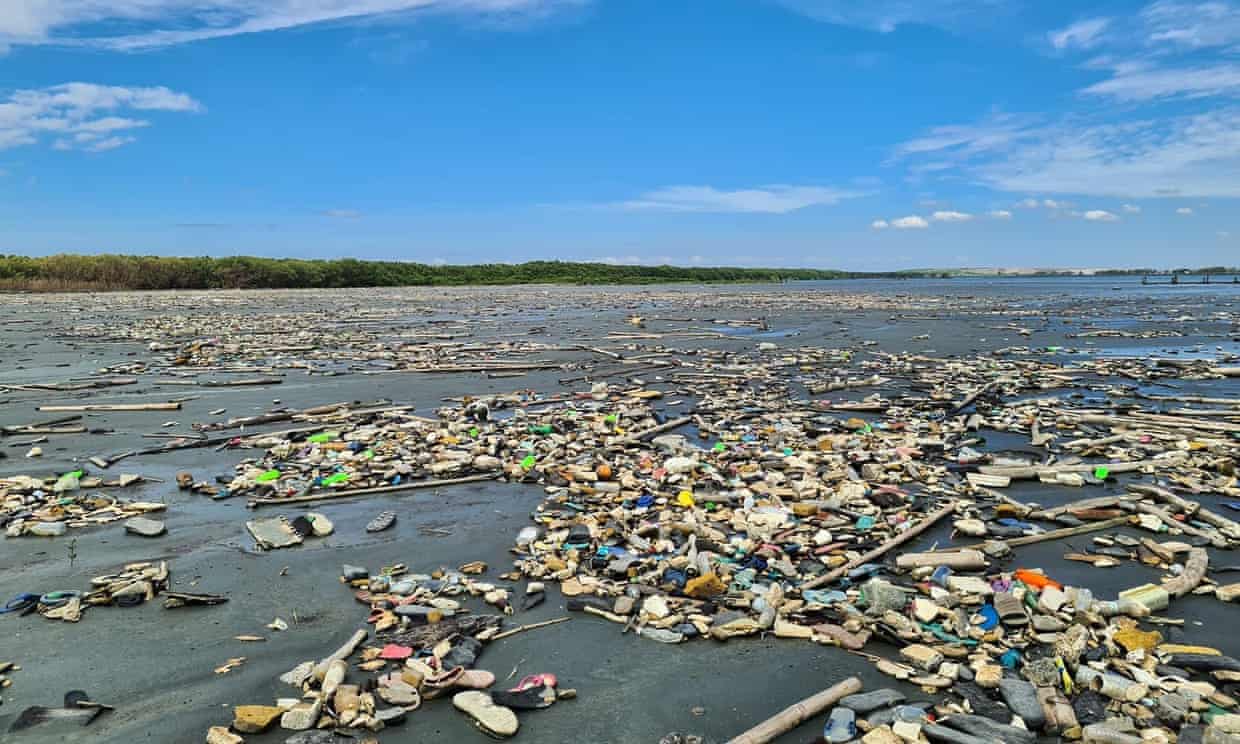
PHILIPPINES – There are stray, abandoned flip flops, old foil food wrappers, crumpled plastic bags, and discarded water bottles. The Navotas mudflats and mangroves in Manila Bay are buried in a thick layer of rubbish. It is “almost choking the mangrove roots,” Diuvs de Jesus, a marine biologist in the Philippines who photographed the area on a recent visit, said. The wetlands are of huge environmental significance. They provide a crucial feeding ground for migratory birds, offer protection against floodwater and help tackle climate change by absorbing far greater levels of carbon dioxide than mountain forests. The plastic pollution, though, could devastate the area. Mangroves have special roots, known as pneumatophores, “sort of like a snorkel that helps them breathe in when sea water rises,” says Janina Castro, member of the Wild Bird Club of the Philippines and advocate for wetland conservation. Plastic risks suffocating pneumatophores, weakening, and potentially killing the trees. READ MORE In a sea of oil palms, even monitor lizards need islands of natural forest

MALAYSIA – The Kinabatangan River rises in the beating heart of Sabah, Malaysian Borneo, where ancient primary forest cloaks the slopes of steep-sided mountains. As it meanders east toward the Sulu Sea, the river traverses floodplains overrun by vast monocultures. Regimented rows of oil palms claw at the thin weft of natural forest that lines the Kinabatangan’s course. This fragile lifeline is home to some of the region’s most spectacular species, including Bornean elephants (Elephas maximus borneensis), orangutans (Pongo pygmaeus) and proboscis monkeys (Nasalis larvatus). Now, scientists have found that the forested river corridor, designated in 2005 as the Lower Kinabatangan Wildlife Sanctuary, is also vital for the somewhat less glamorous Asian water monitor lizard (Varanus salvator). As both predators and scavengers, Asian water monitor lizards are known to flourish in human-impacted landscapes, including oil palm plantations, where they thrive on an abundance of leftovers and rodent prey. Prior research has even shown that they fare better in plantations than natural habitats. READ MORE FEATURED VIDEO How Shrimp Is Made

Like this newsletter?
Pease consider donating to MAP to keep it going.
Giving could never be easier  | URGENT ACTION
BHP: Stop the Greenwash
There is no such thing as ‘green mining’. SIGN OUR PETITION Strengthen 60 Women Farmers in El Salvador
DONATE HERE Stop the East African Pipeline that threatens the planet #STOPEACOP – CLICK HERE Stop construction work on a private port In Defense of the Quilombo Boca Do Rio TAKE ACTION! Tell Sumitomo to stop building polluting coal power in Bangladesh! TAKE ACTION!
Like this newsletter? Pease consider donating to MAP to keep it going. Giving could never be easier
ORDER YOUR 2022 MAP CHILDREN’S ART CALENDER HERE
 13 Year old Linda Li “Mangrove Adventure” from Kid Dream Art School

WATCH NOW 
Restoring The Natural Mangrove Forest
Watch movie 
Community Based Ecological Mangrove Restoration in Rufiji Delta VIEW VIDEO Video: Mangroves for the Future – A look bacK. As the latest phase of Mangroves for the Future (MFF) draws to a close, this video highlights some of the project’s most successful initiatives – from local women supporting national park management in Viet Nam to an island in the Maldives that has become a model for waste management, and everything in between. View Here WANT TO GET INVOLVED?
Follow and Join MAP!    
Like this newsletter? Pease consider donating to MAP to keep it going. Giving could never be easier 

Singing for the Sundarbans WATCH HERE Entrevista con Monica Quarto del Mangrove Action Project (Spanish language) Oye Aqui
Interested in connecting or working with MAP? Check out our opportunities here 
MANGROVE ISSUES Want to learn more about mangroves?
Our short presentation will give you a better understanding of the issues we are working to solve. WATCH PRESENTATION What is CBEMR? Download MAP’s 2 page CBEMR Information Sheet containing links to all MAP’s CBEMR resources – CLICK HERE
View MAP’s uploaded Videos at
MAP Video Gallery Question Your Shrimp Consumer/Markets Campaign!
WATCH VIDEO Mangroves: Guidebook to Malaysia – Click Here SHARE MAP’S VISION
CLICK HERE to watch short introductory video. Together we can work “at the roots of the sea”. Our short documentary, Reducing the Risk of Disaster through Nature-Based Solutions : Mangroves

Marvellous Mangroves Curriculum The Marvellous Mangroves Curriculum begins with a simple philosophy – getting future generations to not only learn about, but understand the importance of mangrove forests. VISIT 
The award-winning Marvellous Mangroves (MM) curriculum educates children on the importance of mangroves and their ecological functions, teaching them about modern challenges and mechanisms for sustainability. VIEW VIDEO Marvellous Mangroves Curriculum in Bangladesh – WATCH VIDEO
MARVELLOUS MANGROVES IN BRAZIL
En Portuges 
Marvellous Mangroves – A Curriculum-Based Teachers Guide.
Like this newsletter? Pease consider donating to MAP to keep it going. Giving could never be easier 
“Question Your Shrimp” Campaign Question Your Shrimp – is it really sustainable? Sign the Petition
Note to Our Readers: We strive to keep active links in our newsletter. However, due to circumstances beyond our control, occasionally links to stories may become broken. If you find a link to a story is not functioning, please cut and paste the headline into your browser search bar. In most cases you should be able to locate the original story.
Not yet a MAP News subscriber?
Click here to subscribe. 
|
























